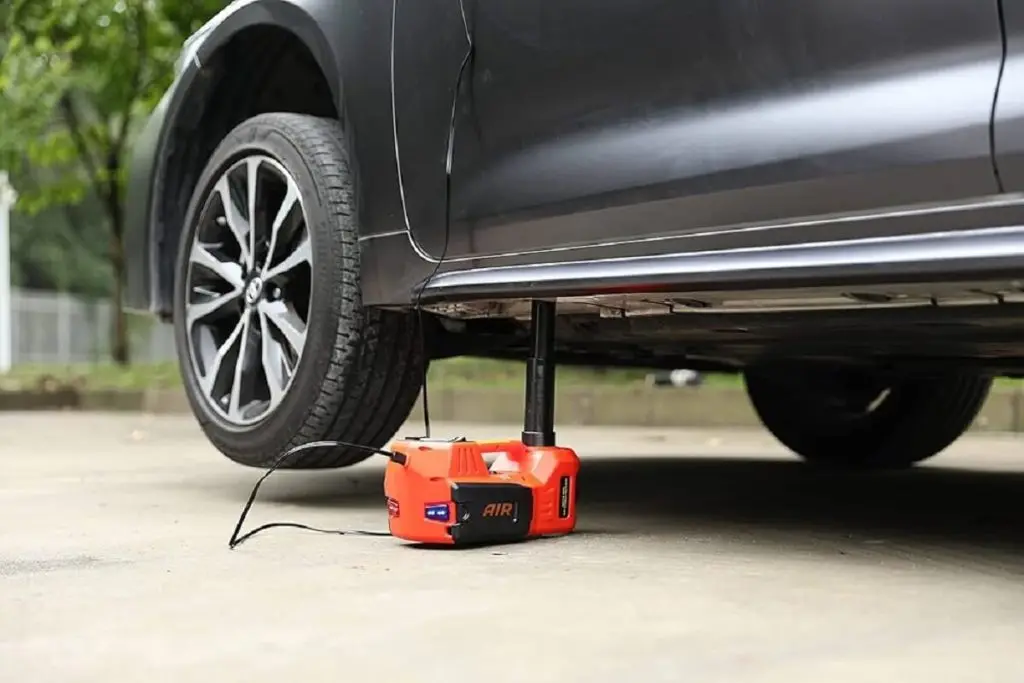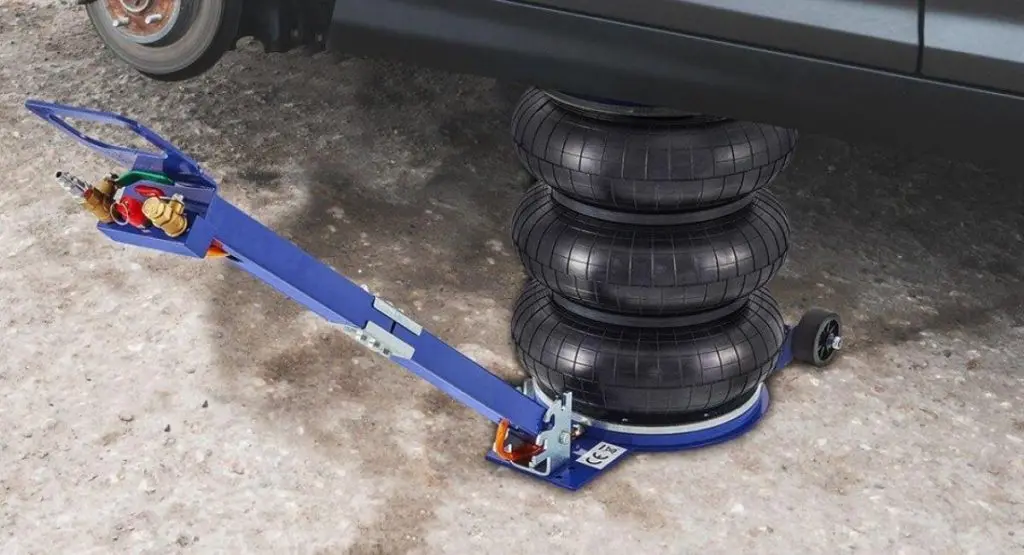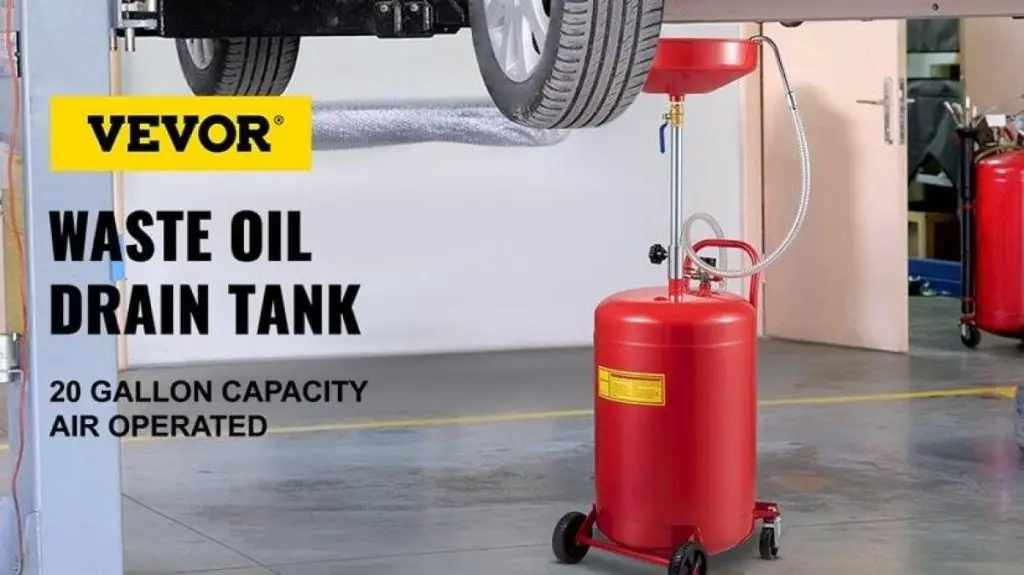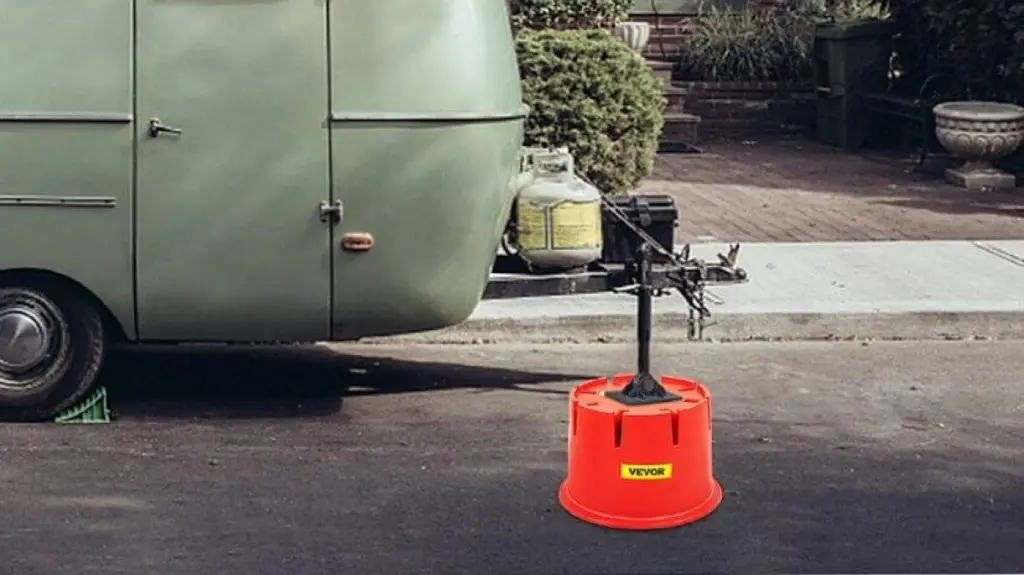Imagine yourself driving along picturesque roads on a road trip when, all of a sudden, a flat tire stops your adventure. This is a common scenario for drivers, but with a dependable hydraulic jack in your trunk, what could have been a nightmare becomes a small inconvenience that could be quickly sorted.
From being used for tire changes to facilitating under-car repairs, hydraulic jacks are essential instruments in automobile maintenance since they provide the required lift to complete a range of chores. For those considering buying this tool, there are several types of hydraulic jacks in the market, with these diverse products coming from different manufacturers and offering distinct lifting capacities and functionalities.
Before paying, we advise that you really should choose a hydraulic jack that assures best performance. One of the models we can recommend are VEVOR hydraulic floor jacks. These jacks are renowned for their exceptional build quality and excellent functionalities, and they provide dependability and top performance you can count on.
This article will walk you through all you need in order to select the ideal hydraulic jack for your requirements.
Table of contents
- Understanding Hydraulic Jacks: Types and Functions
- Key Factors to Consider When Choosing a Hydraulic Jack
- Maintenance Tips for Your Hydraulic Jack
- VEVOR Hydraulic Floor Jack: Features and Benefits
- Safety Measures Using Hydraulic Jacks
- FAQs About Hydraulic Jacks
- Making the Right Choice for Your Hydraulic Jack Needs
Understanding Hydraulic Jacks: Types and Functions
You should know the several hydraulic jack types and their purposes in order to choose the perfect one for your tasks. Let us look at the basics and types of hydraulic jacks.
What is a Hydraulic Jack?
A hydraulic jack is a tool used to lift heavy loads by applying force through a hydraulic cylinder. For vehicle maintenance, this instrument is absolutely essential since it makes jobs like undercarriage inspections and tire changes simple and safe.
How do Hydraulic Jacks Work?
Hydraulic jacks lift large weights using fluid pressure. The jack handle pumps hydraulic fluid into the cylinder, raising the piston and thereby lifting the weight. This system lets even huge trucks be raised effortlessly and with minimum effort.
Types of Hydraulic Jack
Although hydraulic car jacks come in many different types, you should choose one depending on the job you intend to do. The following are some of the major types:
- Floor jacks: Floor jacks are widely used in garages and workshops. Their long handle makes pumping simple and they include a horizontal hydraulic cylinder. They are equipped with wheels and are perfect for low-ground clearance vehicles.
- Bottle jacks: They resemble a bottle, hence the name, and are capable of lifting very heavy loads. Given their great lifting capacity and simplicity of storage, bottle jacks are especially helpful for lifting SUVs and trucks.
- Scissors jacks: Scissor jacks elevate automobiles using a mechanical screw mechanism. They are light and compact; hence, they are usually used as standard equipment in vehicle trunks for emergency tire changes.
Benefits of Using a Hydraulic Car Jack
A hydraulic car jack offers a lot of advantages to users. Some of these benefits include:
- It requires little physical work to raise big cars.
- It lets you lift quickly and smoothly, therefore saving repair time.
- Hydraulic jack offers a consistent and safe elevation, therefore lowering the possibility of mishaps.
- It is suitable for different vehicles, from huge trucks to little cars.
- It is perfect for different maintenance jobs since it allows one to lift large weights.
Key Factors to Consider When Choosing a Hydraulic Jack
Choosing the correct hydraulic jack for your needs in auto maintenance calls for more than just grabbing the first one you come across. Your choice should be guided by several important criteria, including the following:
Lifting Capacity: How Much Weight Can It Handle?
A hydraulic jack’s lifting capacity is absolutely vital. This defines the jack’s maximum safe lifting weight. Make sure the jack you select can carry the weight of your car. For increased safety, always use a jack whose lifting capacity exceeds your car’s weight.
Maximum Lift Height: Will It Work for Your Vehicle?
The highest point at which the jack can raise your vehicle is its maximum lift height. Check the ground clearance of your car to make sure the jack can be raised high enough to create enough of a working area beneath.
Low-Profile Design: Is It Suitable for Low-Clearance Vehicles?
Low-profile jacks are crucial for low-ground clearance vehicles, such as sports cars or some sedans. These jacks are made to fit beneath low vehicles so you can raise them without straying the chassis or body.
Durability and Construction Materials
The construction components of a hydraulic jack define its durability and lifetime. Get jacks constructed from premium steel or aluminum. A well-built jack provides superior performance and safety, in addition to guaranteeing a longer lifespan.
Portability and Storage Considerations
Consider the weight and dimensions of the jack, particularly if you want a portable solution for a roadside crisis. Easily stored in your car, compact and light jacks can be rapidly used as needed. Make sure it fits snugly in your trunk or storage area without crowding too much space.
Safety Features to Look For
Safety is the first concern when using hydraulic jacks. Below are several important safety features to look out for before making a purchase:
- Safety valves: They help to prevent overload by restricting the maximum pressure the jack can manage.
- Wide base: Offers stability and keeps the jack from turning over under use.
- Overload protection: It automatically stops raising should the jack weigh more than its capability.
- Built-in stands: Certain jacks feature built-in stands for extra security while the vehicle is raised.
- Non-slip saddle: It offers a safe grip on the automobile, therefore lowering the chance of slipping.
Maintenance Tips for Your Hydraulic Jack
Proper maintenance is necessary if you wish to maintain your jack’s performance and ensure its durability. Regular maintenance not only keeps the jack in good operating order but also helps avoid unplanned failures at pivotal times. Follow these standard maintenance tips for the best outcome.
Regular Inspection and Cleaning
Look for wear and tear on your hydraulic car jack, including leaks, cracks, or broken components, on a regular basis. After every use, clean the jack to eliminate grease, trash, and grime that could cause harm over time.
Proper Storage Practices
Store your hydraulic jack in a cool, dry place to prevent rust and corrosion. Keep it off the ground to prevent moisture development. Use a protective cover if available to shield it from dust and other contaminants.
Lubricating Moving Parts
Lubricate the moving parts of your hydraulic jack regularly to ensure smooth operation. Use a high-quality lubricant fit for hydraulic machinery. Pay close attention to the pivot points, raising arm, and any other parts where metal components come into contact.
Bleeding Air from the Hydraulic System
Air trapped in the hydraulic system can affect the jack’s performance and lifting capacity. Lower the jack completely, then open the release valve to bleed air from the system. Pump the handle several times to allow any trapped air to escape.
Recommended For Your Project
VEVOR Hydraulic Floor Jack: Features and Benefits
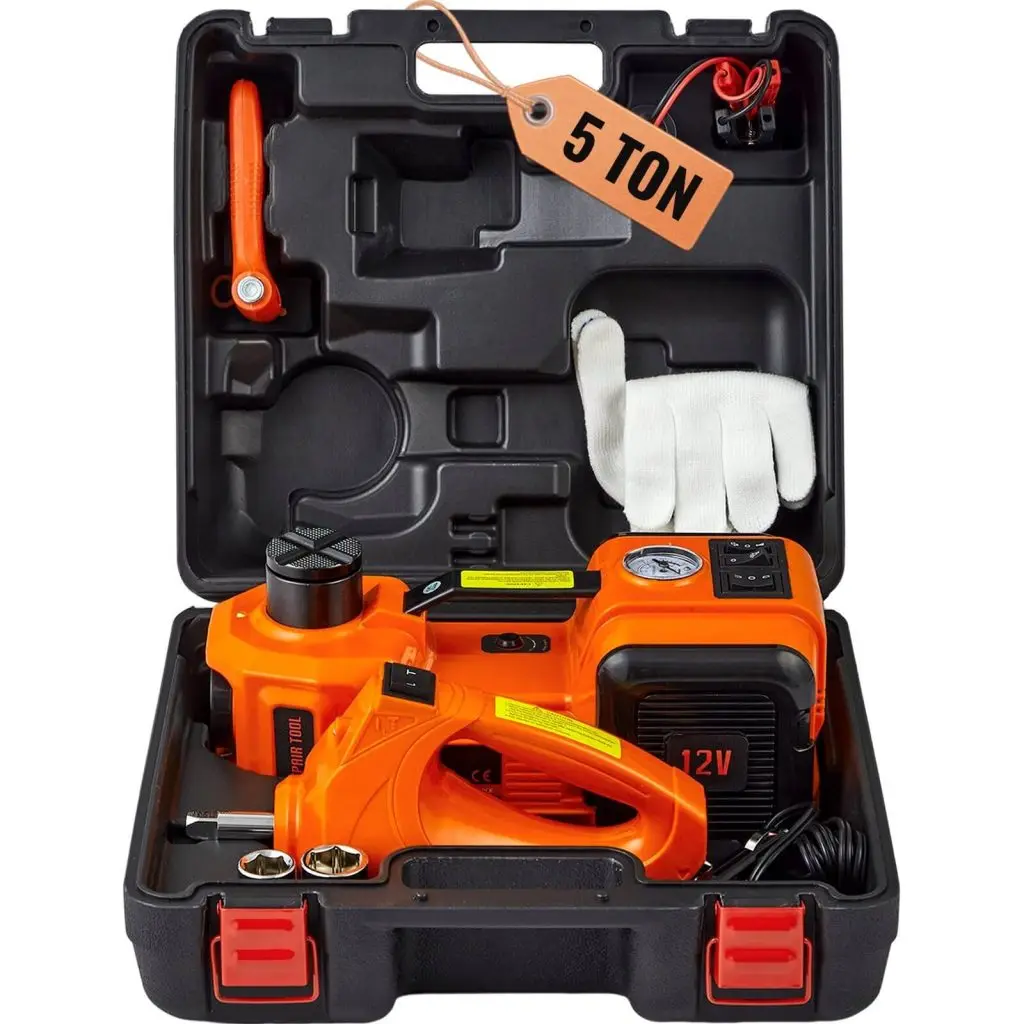
Among the many hydraulic jacks on the market, the VEVOR hydraulic floor jack is unique in terms of quality and overall functionality. This section focuses on the major features and the benefits that come with using the VEVOR hydraulic jack.
Lifting Capacity Options
The VEVOR hydraulic jack offers a robust lifting capacity of 11023 lbs, making it suitable for different vehicles, including sedans, SUVs, and trucks. This flexibility ensures the VEVOR jack’s strength to safely and powerfully raise a small car or a heavy-duty vehicle.
Quick-Lift Technology
The VEVOR hydraulic jack can elevate up to 17.7 inches in less than two minutes with sophisticated quick-lift technology. This function is very helpful in roadside crises since every second counts. The fast-lift technology ensures that your automobile will be off the ground quickly and that your repairs will start immediately.
Durable Steel Construction
Made of superior steel, the VEVOR hydraulic jack can withstand high use and harsh environments. Its strong construction ensures long-lasting performance, therefore providing you with a reliable tool able to handle regular and demanding tasks without endangering safety or use.
Low-Profile Design for Versatility
Low-ground clearance vehicles will find the low-profile design in the VEVOR hydraulic jack ideal. Its adaptability allows you to effortlessly position the jack beneath several types of vehicles, so you may raise even the lowest cars without any difficulties.
In-Built Safety Measures
Multiple built-in safety elements in the VEVOR hydraulic jack provide stability by preventing over-extension and ensuring the jack automatically stops upon reaching maximum height. Additionally, the wide base of the jack increases stability and reduces accidents.
Safety Measures Using Hydraulic Jacks
Hydraulic jacks are efficient in carrying out lifting needs for your car maintenance. However, safety measures should always be taken when using the tools to avoid accidents and injuries. These are some fundamental safety tips to remember when using hydraulic jacks:
- Before operating the jack, always look through and understand the manufacturer’s instructions.
- Look for any wear or damage before every usage. Never operate a faulty jack.
- Run the jack on a level, steady surface, to prevent it from toppling over.
- To stop the car from rolling, engage the parking brake and apply wheel chocks.
- Raise the car gently and slowly to stop unplanned movement.
Although a hydraulic jack is great for lifting, an elevated vehicle should never be supported by just one source. You also need jack stands if you want the weight of the vehicle to be more securely held. Using jack stands also guarantees safety in case the jack falls or fails. Wheel chocks, put behind the tires to stop the car from rolling, and safety blocks used under the wheels or chassis for extra support are other supporting tools you should consider.
FAQs About Hydraulic Jacks
How Often Should I Replace My Hydraulic Jack?
Hydraulic jacks should be replaced when they show wear, corrosion, or poor performance. Also, when the tools fall short of sustaining pressure or attaining their maximum height, it is time for a replacement.
Can I Use a Hydraulic Jack on any Surface?
No, operate the hydraulic jack on a level, stable surface to ensure safety and stop tipping. Avoid using it on sloped or uneven surfaces since it weakens stability and could lead to injuries.
What is the Difference between a Hydraulic Jack and a Mechanical Jack?
Hydraulic jacks can lift large loads with minimal effort and fluid pressure. On the other hand, mechanical jacks use screw mechanisms; hence, they demand more physical effort to work.
Are Hydraulic Jacks Safe for All Types of Vehicles?
Generally speaking, hydraulic jacks are safe for most types of vehicles—including trucks, SUVs, and cars—provided the jacks have the necessary lifting capacity. To be sure the jack can handle your vehicle’s weight, always check its weight limit.
Making the Right Choice for Your Hydraulic Jack Needs
Choosing the right hydraulic jack entails balancing lifting capacity, maximum lift height, durability, and safety factors. And if you want your jack to last longer, consider sticking to regular maintenance routines recommended by the manufacturers.
While there are several quality hydraulic jacks out there, we recommend the VEVOR hydraulic floor jack, a tool with a blend of efficiency and quality. The VEVOR mode features excellent lifting capacity, sturdy design, quick-lift technology, and extensive safety measures that ensures users won’t run the risk of accidents. The jack is also known to offer excellent value for money. You can visit the VEVOR website today or check the websites of the various partner merchants to make an order today!

